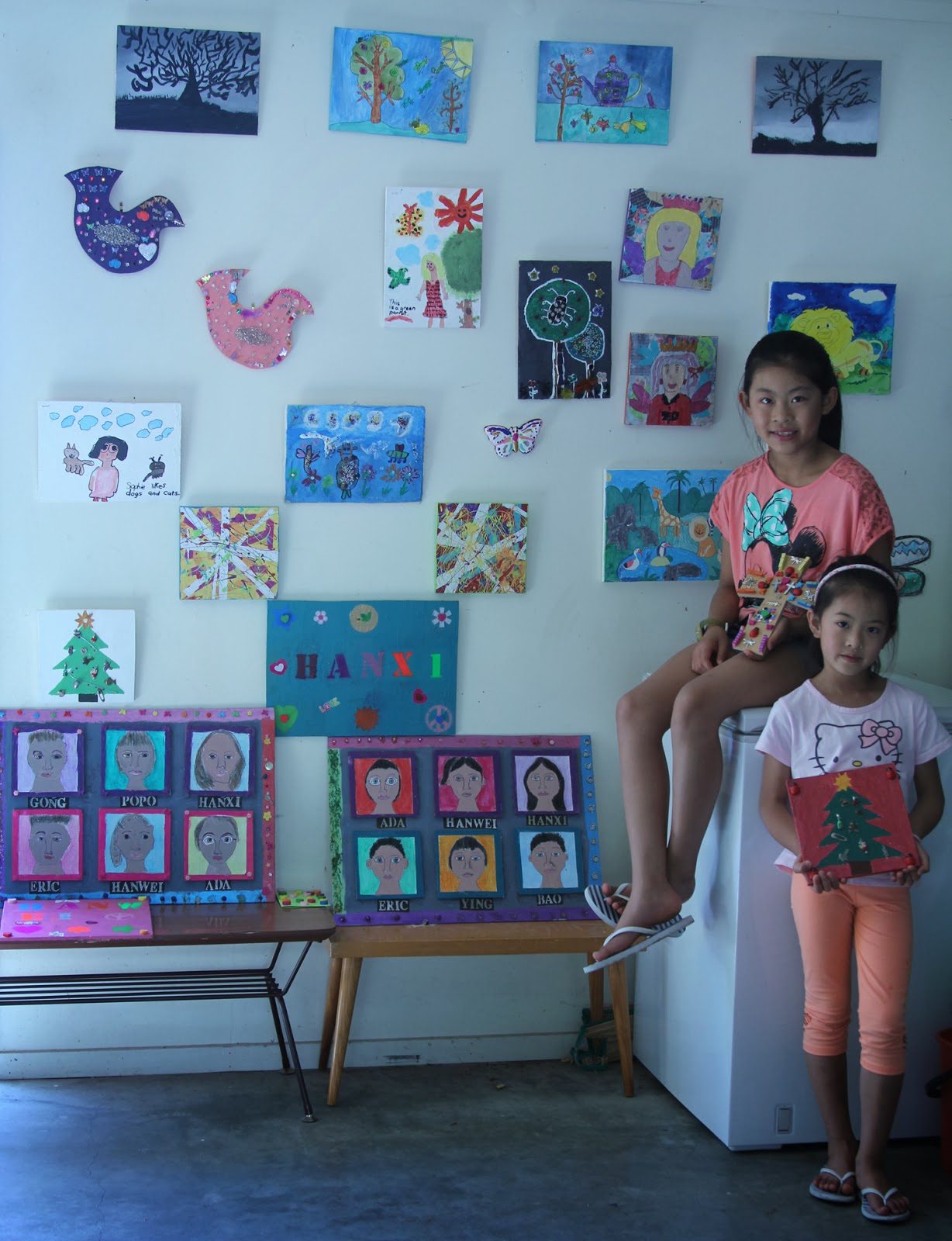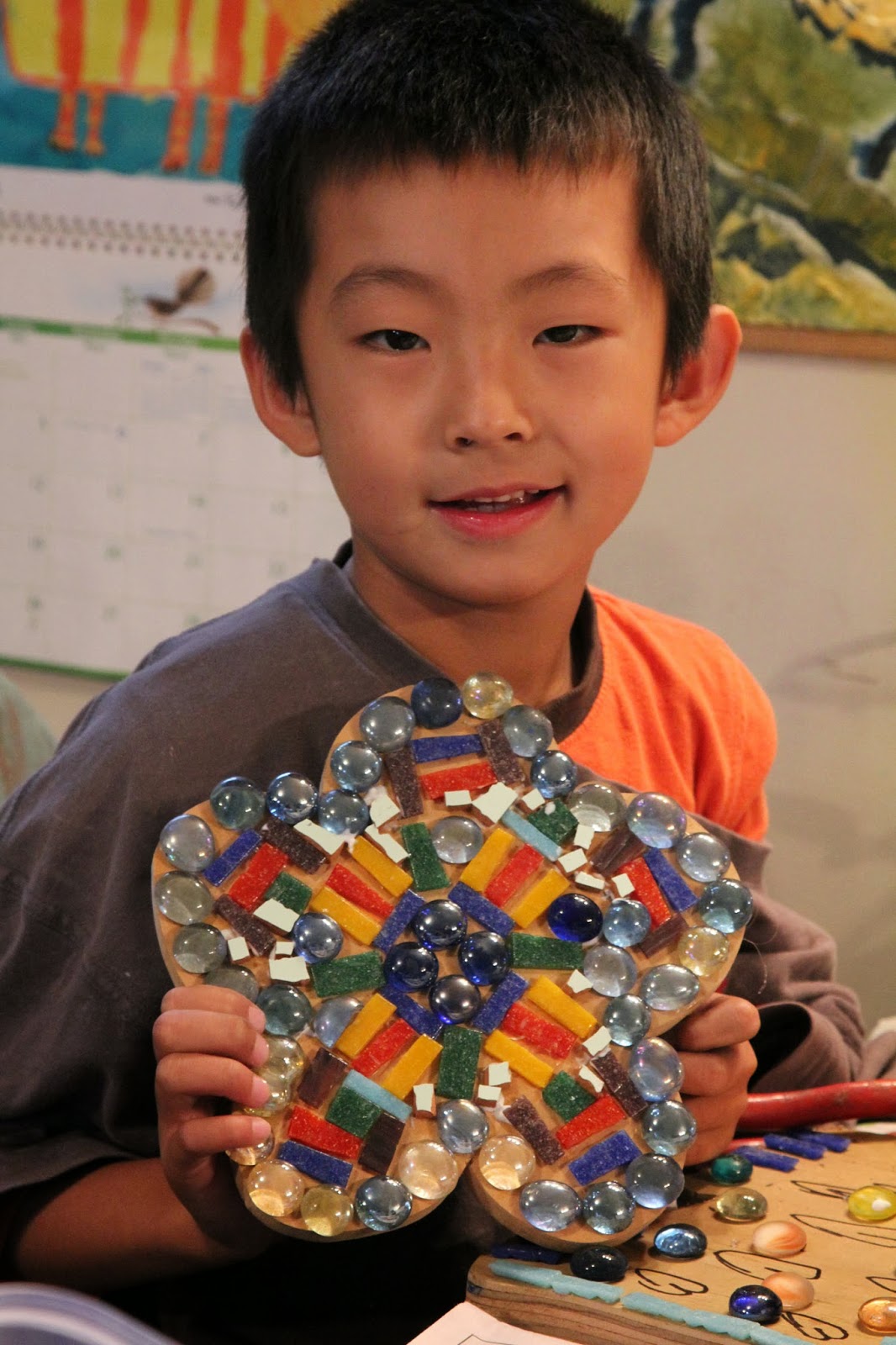Art is all around us
However, this bottomless cultural resource is largely underused by many language teachers.
Why use art?
Responding to art can be very stimulating and can lead onto a great variety of activities.
Using art provides a useful change of pace.
While many teachers use visual images to introduce a topic or language item, actually asking the students to engage with and respond to the piece of art can encourage students to become involved on quite a different level.
3. Incorporating art into the class or syllabus can take the students out of the classroom and encourage them to use their language skills in the real world.
A visit to my mosaic and painting studio with an assignment that involves research on the internet can generate all sorts of language.
4. Thinking about or even creating art can be very motivating.
It can take the emphasis off of accuracy and put it onto fluency and the ability to clearly express thoughts and ideas.
This is great for students whose progress in speaking is hindered by a fear of making mistakes.

5. Responding to art has the potential to develop students’ creative and critical thinking skills.
Students as low as pre-intermediate level will be able to read a short biography of an artist and discuss how their art depicts different aspects of their lives.
Potential problems and solutions
Problem
Art is very subjective and therefore we may be faced with students who are reluctant to engage with the chosen examples of art.
Solution:
Encourage students to either choose which works of art are explored, or alternatively ensure that a variety of styles are represented.
Choosing art that has some relevance to the students is always a good idea, either from its subject matter or the background of the artist.
Problem:
Students (and teachers!) may not perceive some art-related activities to be useful for language learning.
Solution: As this is our primary goal, it is therefore very important to structure activities carefully so that there is a clear outcome and learning point.
For example, a simple discussion about the meaning behind a piece of modern art can be combined with input on functional language for giving opinions and agreeing and disagreeing.
Meanwhile, other activities can be language-led.
For example, using a piece of art to generate wh- questions which are then given to another pair of students to answer.
Considering structure will also help to control the direction of discussion/lessons based around responding to art.
1. Looking at art
There are lots of different activities that involve students looking at and responding to pieces of art. For example:
-
Ask the students to choose a character from a painting or sculpture and write a mini-biography or story about that character
- Compare two pieces of art with similar subjects, practising comparative language and adjectives
- Ask the students to look at the website of a local artist (janetkeen.blogspot.com) and write a quiz about the works of art to swap with the other students to answer
- Write questions to ask an artist or a character in a painting.
- Then role play the interview in pairs, followed by writing up a news article about the interview (using reported speech).
2. Sharing art
- Ask the students to identify and bring in a copy of a piece of art by an artist from their country.
- Make a gallery in the classroom and ask the students to decide on a title for each piece of work in groups.
- My favouite Japanese Spitz dog Spooky, his mother is Keiko and he is a very good pupil.

- Ask the students to bring in a photograph they have taken and ask the other students to write a short story about the events leading up to the moment the photograph was taken (practising past tenses) and/or what happened after the photograph was taken.
- Then check whether their guess was right with the owner.
- Get the students to bring in a piece of art that represents their childhood and ask the other students to form sentences about what they ‘used to do’ and/or write questions to ask the owner who brought it in
3. Creating art
- Put the students into groups and ask them to create a piece of art
using a variety of easily found materials – plastic bags, string,
tissues, cardboard boxes – whatever you have to hand!
- Get them to title their piece of work and judge them according to originality, teamwork and use of materials

- Do a visualisation exercise where you get the students to imagine painting the most beautiful picture they have ever seen.
- Then ask them to describe the picture to a partner who tries to draw it
- Get the students to record vocabulary by writing the letters in a way that depicts the meaning of a word – this works best with adjectives.
- For example, ‘happy’ can be written in the form of a smile.
- To get feedback on a course, ask the students to draw a picture in groups to represent how they felt about the course and then describe/explain it to you and the other students.
Art definitely has a place in the language classroom and can be used in many different ways.
It is a great resource for discussions as well as practising a variety of language.
Activities incorporating art are motivating for students, provide an often welcome change of pace and can stimulate and develop creative and critical thinking skills.
Art and Mosaic Classes for ESOL Students enrolling now.
$25.00 per child per hour.
Adult ESOL and Art lessons $25.00 per hour plus material cost of $10.00 or more depending on project.
People can come for one lesson per week or two to three for accelerated progress.
Monday to Wednesday, after school and Friday after school.
Phone 346-3435 or email jkeen@clear.net.nz to reserve your childs place.
Or Adults Monday to Wednesday 9.30am to 11.30am
374 Clayton Road, Rotorua, New Zealand
Mosaics,
Painting,
Sculpture,
Visual journaling and more.
Homework is encouraged that is fun to do.
I have a large range of children's books for them to read for ideas and stimulation.
“A candle loses nothing of its light by lighting another candle.”
Read more at http://www.usingenglish.com/articles/quotations-for-motivation-in-esl-classroom.html#LltL7SL2dhFzgeup.99
Read more at http://www.usingenglish.com/articles/quotations-for-motivation-in-esl-classroom.html#LltL7SL2dhFzgeup.99
“A candle loses nothing of its light by lighting another candle.”
Read more at http://www.usingenglish.com/articles/quotations-for-motivation-in-esl-classroom.html#LltL7SL2dhFzgeup.99
Creative Quote of the day Read more at http://www.usingenglish.com/articles/quotations-for-motivation-in-esl-classroom.html#LltL7SL2dhFzgeup.99
A candle loses none of its light by lighting another candle. Anonymous.




















































